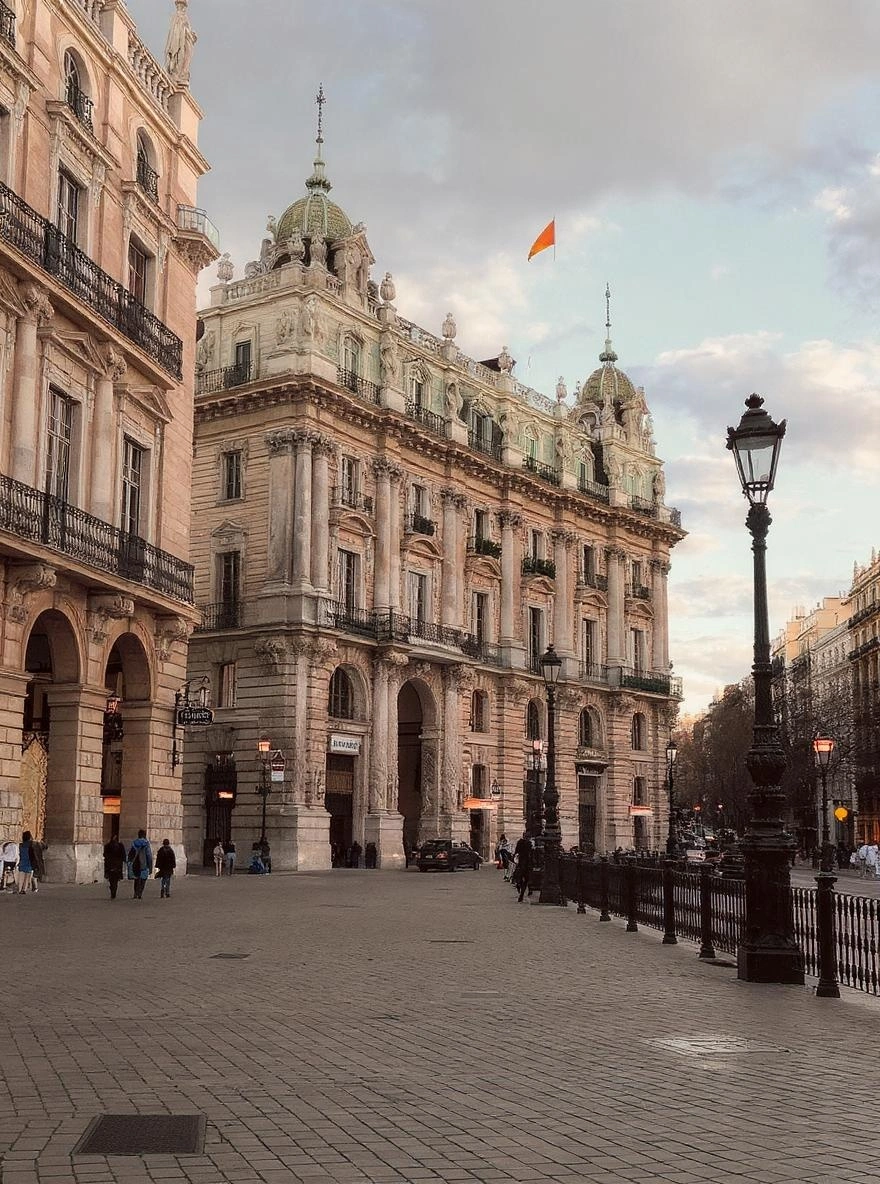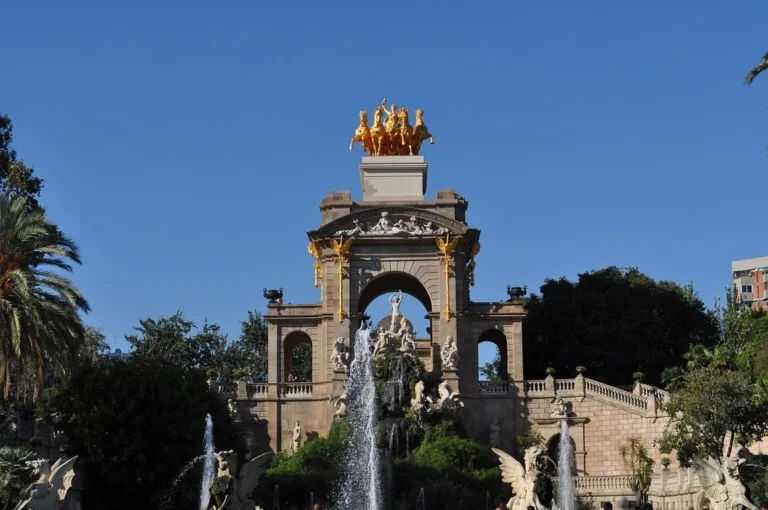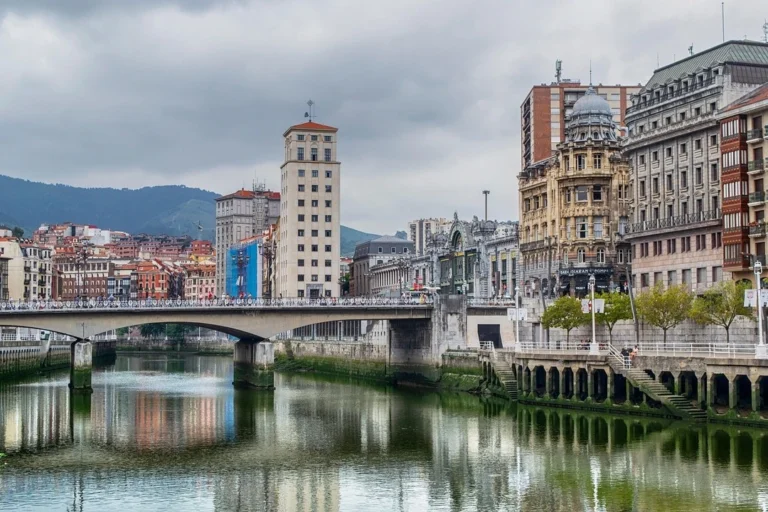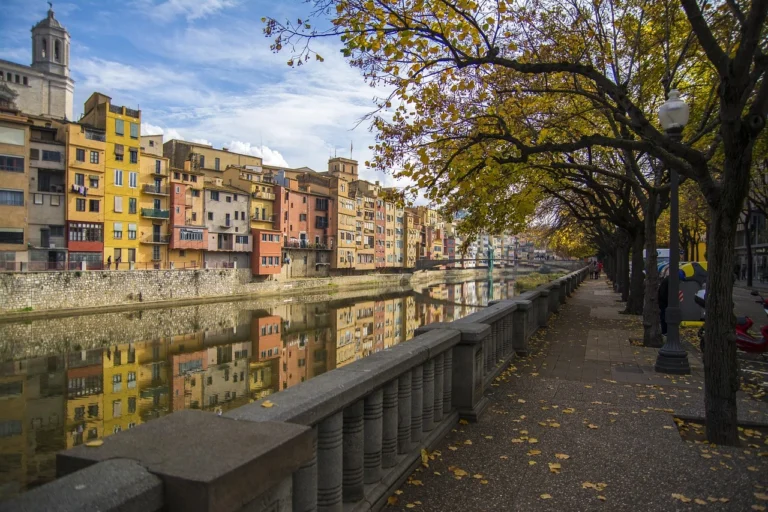The Ultimate Guide: Best Time to Visit Madrid for an Unforgettable Trip
Table of Contents
Madrid, with its vibrant culture and stunning architecture, welcomes visitors year-round, but timing your visit can truly elevate your experience. The Spanish capital boasts an impressive 2,900 hours of sunshine annually, making it Europe’s sunniest capital city. This abundant sunshine shapes Madrid’s outdoor lifestyle and creates endless opportunities for exploration no matter when you visit. While preferences vary based on budget and interests, most travelers agree that late spring (April-May) and early fall (mid-September-October) offer the perfect balance of pleasant weather and manageable crowds.
Madrid’s Seasons at a Glance: Quick Guide
• Best Weather: March–May, September–October
• Cheapest Times: January–February, August, November
• Times to Consider Avoiding: July–August (extreme heat and crowds)
• Peak Tourist Season: June–August, April–June, September–October, and December
• Shoulder Seasons: April–May, September–October, March, November
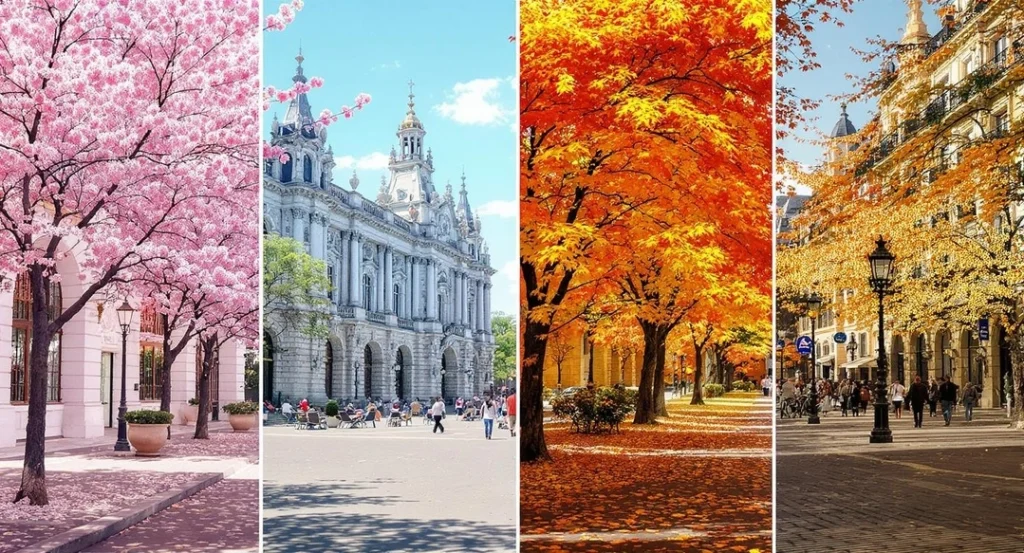
Spring in Madrid: Blooming Beauty & Lively Celebrations
Spring transforms Madrid as the city awakens from winter slumber, bringing blooming parks and a surge in outdoor activities. Many travelers consider this the second-best time to visit Madrid overall.
Weather: Spring days are warm with refreshingly cool evenings. March temperatures range from 10–18°C (50–64°F), requiring light layers. April warms to 12–20°C (54–68°F) with minimal rain (6-7 days), while May brings delightful warmth at 15–24°C (59–75°F) and is widely regarded as one of Madrid’s most perfect months weather-wise.
Crowds: Spring sees moderate crowds overall, though May attracts more visitors due to its beautiful weather and festive atmosphere. April offers a sweet spot with mild crowds and pleasant conditions.
Key Events: Spring brings spectacular celebrations including Holy Week processions (March-April), the prestigious Mutua Madrid Open tennis tournament (late April-early May), and the vibrant San Isidro Festival (mid-May) honoring Madrid’s patron saint with free concerts and cultural events. Music lovers shouldn’t miss Festimad (mid-spring), while history buffs will enjoy Dos De Mayo (May 2) commemorations.
Top Activities: Spring is perfect for strolling through El Retiro Park’s blooming gardens, exploring world-class museums like the Prado, enjoying leisurely café-hopping in La Latina, and witnessing the emotional Semana Santa processions. The weather is ideal for biking through Casa de Campo park and enjoying Madrid’s famous terrace dining culture. Don’t miss seeing locals in traditional chulapos attire during San Isidro!
Travel Tips: Pack layers for temperature fluctuations, carry a small umbrella for occasional showers, and book San Isidro events well in advance. Comfortable walking shoes are essential for Madrid’s cobblestone streets.
Pros: Gloriously long days, perfect weather, flower-filled parks, and abundant cultural events make spring ideal for both sightseeing and relaxing outdoor activities.
Cons: May can get crowded, and good accommodation deals become scarce – book at least 6 months ahead for the best options.
Summer in Madrid: Hot Days & Vibrant Nightlife
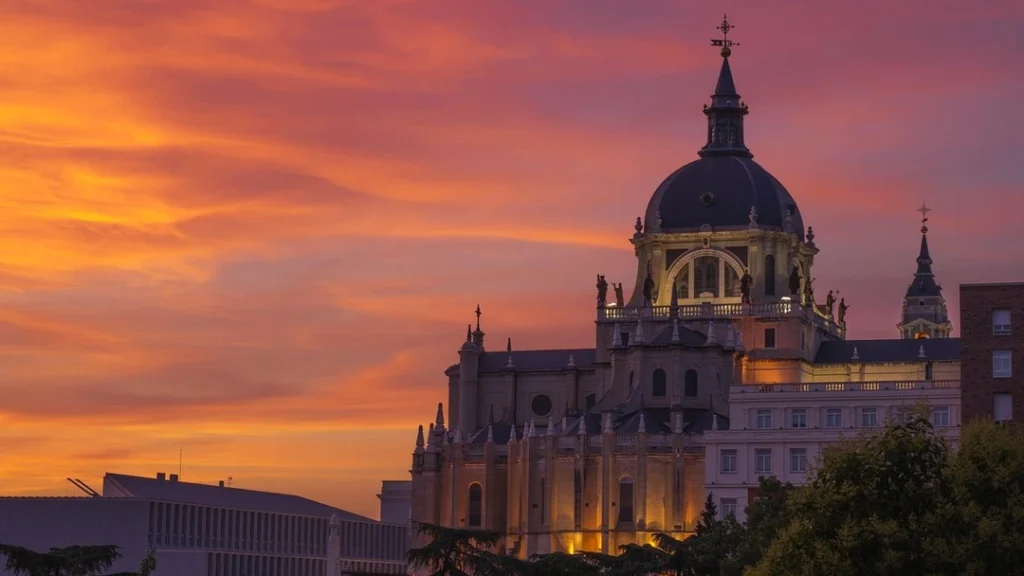
Summer in Madrid brings scorching temperatures but also an electrifying atmosphere with extended daylight hours perfect for nocturnal adventures. Interestingly, July and August see many locals leave the city, creating a unique experience for heat-tolerant visitors.
Weather: Summer is hot and exceptionally dry. June averages 18–30°C (64–86°F), while July and August soar to 22–35°C (72–95°F), frequently exceeding 40°C on the hottest days. If you’re not a fan of heat, summer might be challenging!
Crowds: June and July draw large tourist numbers, while August sees a curious mix – fewer locals but still many international visitors. Some restaurants and small shops close during August when Madrileños escape to coastal areas.
Key Events: Summer hosts Madrid’s most vibrant celebrations, including Madrid Pride (June), one of Europe’s largest LGBTQ+ events attracting nearly 2 million visitors. The season-long Veranos de la Villa festival (July-August) fills the city with cultural performances, while MadCool (early July) brings international music stars. August features the energetic La Paloma Festival in La Latina neighborhood.
Top Activities: Summer is prime time for Madrid’s legendary rooftop bars, swimming pool terraces, and evening strolls (paseos) along Gran Vía. Locals and visitors alike enjoy open-air concerts, outdoor film screenings, and late-night dining – 10 PM dinners are completely normal here! During peak afternoon heat, the air-conditioned museums offer perfect refuge.
Travel Tips: Stay constantly hydrated, seek shade during midday hours, and adjust your schedule to start sightseeing before 10 AM. Embrace the Spanish siesta tradition by retreating indoors from 1-4 PM. Pack sun protection essentials and lightweight, breathable clothing.
Pros: The electric atmosphere, extended daylight hours, and world-class nightlife create unforgettable summer memories. August offers slightly better accommodation deals for budget travelers willing to brave the heat.
Cons: The scorching temperatures can be genuinely overwhelming, making daytime exploration challenging. The exodus of locals in August creates a less authentic atmosphere, and some small businesses close temporarily.
Fall in Madrid: Crisp Air & Cultural Immersion
Fall brings relief from summer’s intensity with mild temperatures and a return to local rhythms. Many Madrid insiders consider autumn the absolute best time to visit the city.
Weather: September retains summer’s warmth at 17–28°C (63–82°F) but without the extreme heat. October transitions to crisp days at 13–22°C (55–72°F) with cooler mornings and evenings, while November cools further to 8–16°C (46–61°F). October sees slightly more rain (about 10 days) but typically as brief showers rather than all-day downpours.
Crowds: Fall attracts moderate visitor numbers – busier than winter but less intense than summer. September and October remain popular due to ideal weather conditions, while November sees a noticeable decline in tourism.
Key Events: The cultural calendar revives with Festival de Otoño (September-October) showcasing performing arts, Día de la Hispanidad celebrations (October 12) with military parades, and the arts-focused Noche en Blanco with late-night museum openings. Jazz enthusiasts shouldn’t miss November’s JazzMadrid Festival, while wine lovers can experience the tail end of grape harvest season.
Top Activities: Fall creates perfect conditions for wandering through trendy Malasaña neighborhood, visiting the Thyssen-Bornemisza Museum, enjoying tapas crawls in La Latina, and appreciating autumn foliage in parks like Juan Carlos I. Evening temperatures are ideal for Madrid’s jazz clubs and authentic flamenco performances.
Travel Tips: Layer clothing for temperature variations between morning, afternoon, and evening. A light jacket for evenings, scarves, and light wool sweaters are fall essentials. Waterproof footwear becomes more important in November.
Pros: Perfect sightseeing temperatures, manageable crowds, better accommodation deals than high season, and a revived local cultural scene make fall incredibly appealing.
Cons: September and October still require advance booking for popular attractions, and there’s a higher chance of encountering rain than in summer.
Winter in Madrid: Budget-Friendly & Festive Charm
Winter offers Madrid’s most budget-friendly period alongside festive charm and peaceful exploration opportunities (outside holiday peaks). Unlike many European capitals, Madrid enjoys remarkably blue skies and crisp days even in winter months.
Weather: While definitely cold, Madrid’s winter is milder than many European destinations. December through February averages 4–14°C (39–57°F), with January typically being coldest. Wind chill can make temperatures feel lower, but Madrid still receives abundant sunshine.
Crowds: January and February see the year’s lowest tourist numbers, creating a more relaxed atmosphere. December attracts moderate crowds, with a significant spike during Christmas and New Year’s celebrations.
Key Events: December transforms Plaza Mayor with charming Christmas markets, while New Year’s Eve centers around Puerta del Sol’s famous clock and grape-eating tradition. January 5th brings the spectacular Three Kings Parade, a major celebration in Spanish culture. February features carnival festivities with family-friendly parades and costumes. Food lovers might catch Gastrofestival, though its dates vary annually.
Top Activities: Winter is perfect for admiring elaborate Nativity scenes throughout the city, savoring churros con chocolate at historic Chocolatería San Ginés, exploring the Royal Palace’s ornate interiors, and visiting world-class museums without summer queues. It’s also prime time to sample hearty Madrid specialties like cocido madrileño (chickpea stew).
Travel Tips: Book indoor attractions ahead to avoid waiting in cold temperatures, pack a warm coat, scarf, and gloves, and take advantage of winter sales for shopping bargains, especially in January.
Pros: Winter offers the year’s lowest hotel rates, minimal crowds (January-February), festive atmosphere (December), and easy access to cultural venues without long lines.
Cons: Cooler temperatures, occasional rain, shorter daylight hours, and closed outdoor terraces might disappoint visitors hoping for Madrid’s famous café culture. December holidays bring higher prices and bigger crowds.
Key Considerations for Your Madrid Trip
Budget & Prices: The most affordable months are January, February, August, and November, while May through July, September, October, and December (holidays) command premium prices. The average daily tourist expenditure in 2022 was €276.
Crowd Levels: For a more peaceful experience, visit during January, February, November, or even August (when locals leave). Expect the highest tourist concentrations in May, June, July, September, October, and December holidays. Madrid generally handles its 10.6 million annual tourists better than Barcelona, with less overtourism concerns.
Weather Preferences: Madrid’s high-altitude location creates dramatic temperature variations between seasons. The city offers either sunny, warm conditions or cooler, crisp days – there’s rarely an in-between!
Insider Tips for Planning Your Madrid Visit
Adjust to Spanish Meal Times: Restaurants typically open for lunch at 1 PM and dinner at 8 PM, with locals often dining even later. Arriving at 8 PM for dinner might mean you’re the only customers!
Embrace the Siesta Culture: Particularly in summer, many businesses close during the hottest hours (1–4 PM). Plan indoor activities during this time or join locals in taking a midday break.
Dress Appropriately: Madrileños take fashion seriously while keeping comfortable. Save shorts for peak summer, avoid flip-flops except at pools, and always pack layers for spring/fall temperature swings.
Drink the Tap Water: Madrid’s water is completely safe and tastes good – bring a refillable bottle to stay hydrated while reducing plastic waste.
Skip Dining in Plaza Mayor: While visually stunning, restaurants here typically offer mediocre food at inflated prices. Enjoy coffee with a view, but dine in neighboring areas for better value and quality.
Learn Basic Spanish Phrases: English proficiency varies widely, and locals appreciate visitors who make an effort with simple greetings and courtesy phrases.
Use Madrid’s Excellent Public Transport: The metro, bus, and light rail systems are clean, efficient, and cover the entire city. Madrid is also wonderfully walkable, with many attractions clustered together.
Book in Advance: Especially during high season and for popular museums like the Prado, advance reservations can save hours of queuing time.
Beyond the Seasons: Madrid’s Year-Round Appeal
Madrid’s magic transcends seasonal considerations, with iconic landmarks like Puerta del Sol, Plaza Mayor, and Gran Vía drawing visitors throughout the year. The city’s cultural treasures, including the world-famous “Golden Triangle” of art museums (Prado, Reina Sofía, and Thyssen-Bornemisza), offer indoor pleasures regardless of weather.
Green spaces like El Retiro Park provide peaceful retreats, while neighborhoods such as Malasaña and Chueca pulse with energy day and night. The city’s culinary scene delights year-round with classics like tortilla española, gambas al ajillo, and churros con chocolate, best enjoyed alongside locals at traditional markets like Mercado de San Miguel.
Frequently Asked Questions about Visiting Madrid
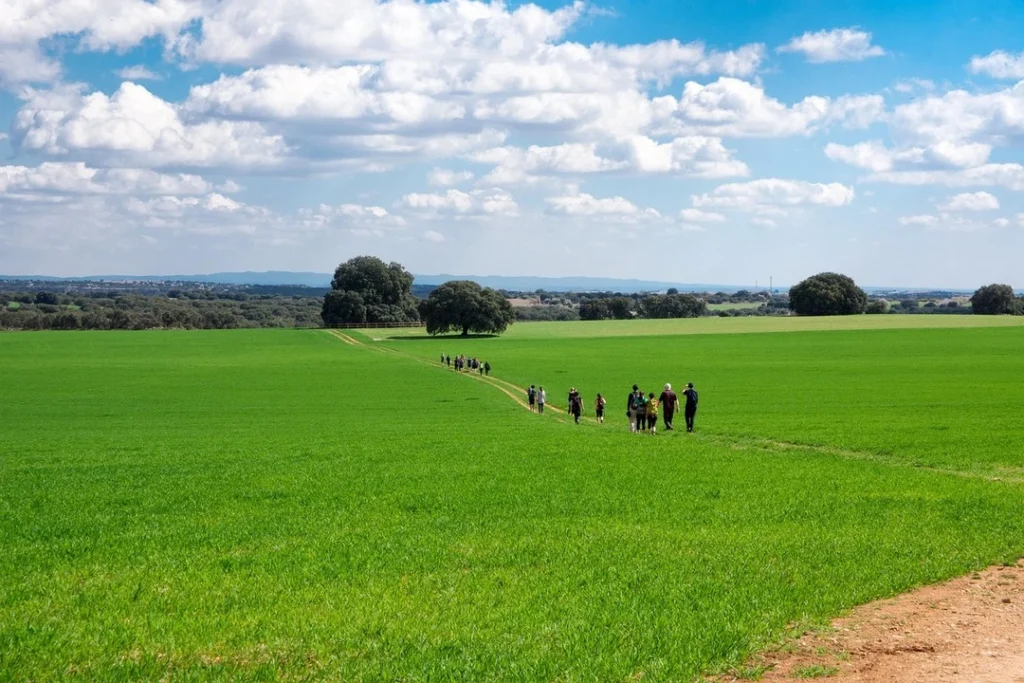
What is the peak tourist season in Madrid? The busiest periods are June through August, April through June, September through October, and December holidays.
When is the cheapest time to visit Madrid? January and February offer the best bargains, followed by August and November.
What’s the best weather in Madrid? Spring (March–May) and fall (September–October) bring the most pleasant temperatures and minimal rainfall, with Madrid enjoying nearly 300 days of sunshine annually.
Are there seasonal events in Madrid? Absolutely! Major celebrations include San Isidro in May, Madrid Pride in June, Veranos de la Villa throughout summer, and Festival de Otoño in autumn.
Is it too hot to visit Madrid in summer? July and August regularly exceed 35°C (95°F) and can top 40°C, making midday activities challenging. Early mornings and evenings become the primary exploration times.
Is winter a good time to visit Madrid? Winter offers a quieter, more affordable experience with festive charm in December and fewer crowds in January-February. Temperatures are cool but often sunny.
Which month is best for couples in Madrid? May and October offer romantic conditions with beautiful weather, flowering parks, and vibrant local atmosphere without overwhelming crowds.
Is Madrid cheap or expensive? Madrid remains more affordable than many European capitals, with the best values in January, February, August, and November. The average daily tourist spend in 2022 was €276.
How long should I stay in Madrid? While the average tourist stay is just 2.17 nights, at least 2-3 full days are recommended to experience Madrid’s highlights, with 4-5 days being ideal for a deeper exploration.
The Best Time to Visit Madrid Is… When You Can Go!
While spring and fall offer that perfect sweet spot of pleasant weather and manageable crowds, the truth is that Madrid shines with unique charm in every season. Winter brings budget-friendly rates and festive magic, while summer offers legendary nightlife and endless sunshine (if you can handle the heat!).
The best advice? Choose your travel dates based on your personal priorities – whether that’s catching specific festivals, maximizing your budget, or ensuring comfortable sightseeing temperatures. Madrid’s welcoming spirit, world-class cultural attractions, and incredible food scene ensure a memorable experience regardless of when you visit. Just remember to book well ahead during popular periods, pack appropriately for the season, and prepare to fall in love with this magnificent Spanish capital!

